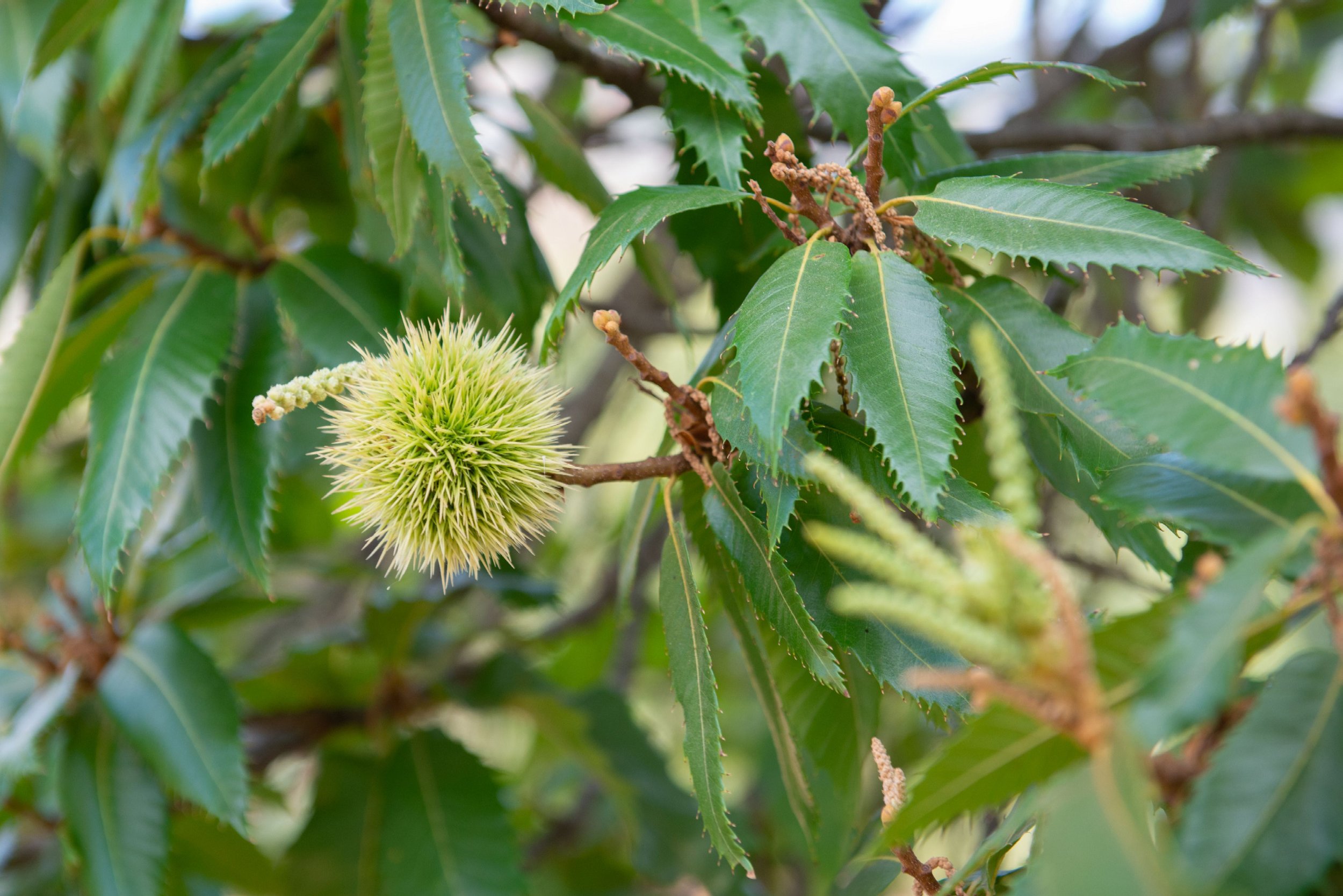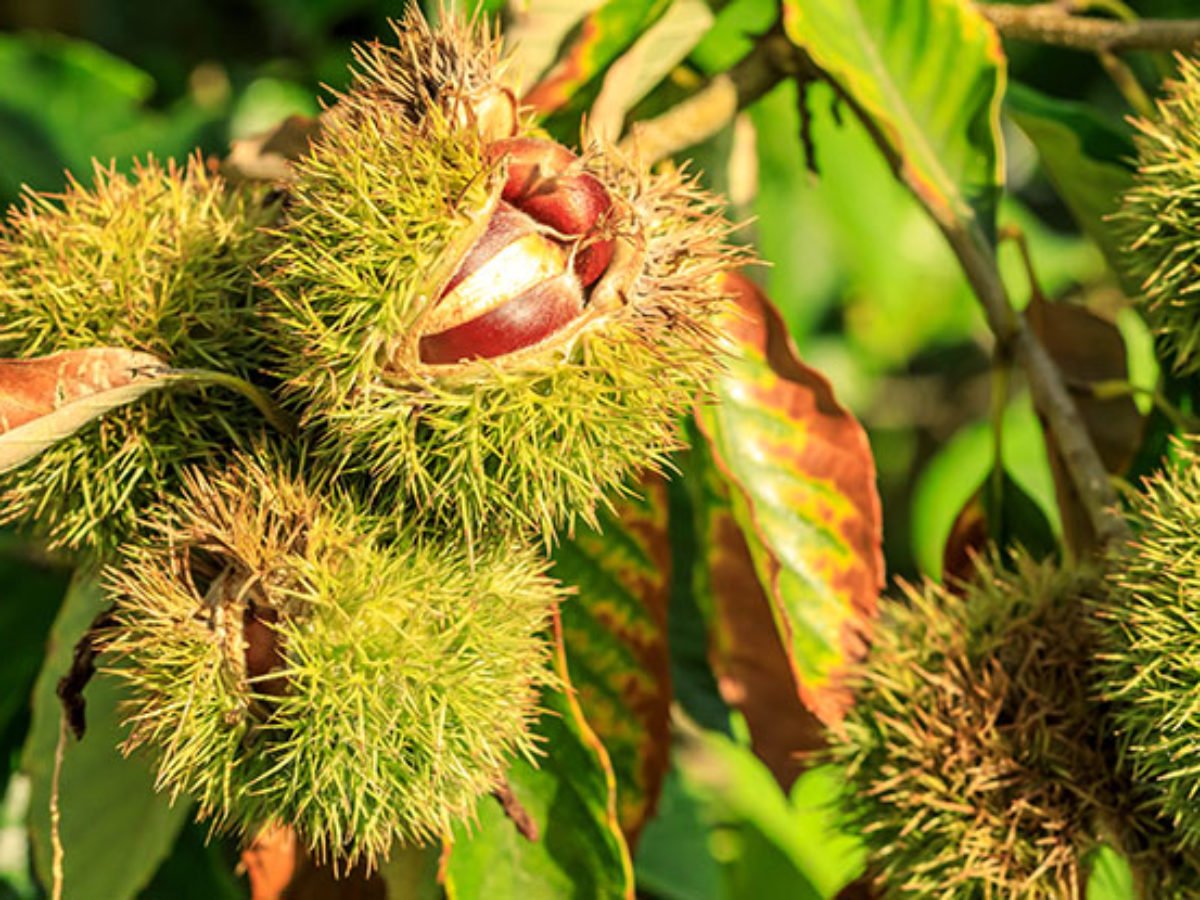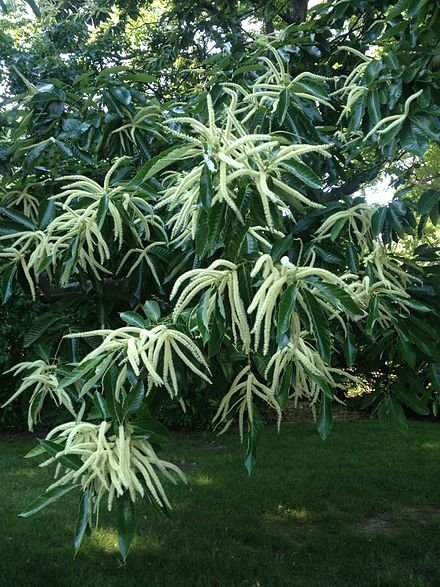
Chinese Chestnut
Chinese Chestnut
Botanical Name: Castanea mollissimaFamily Name: Fagaceae – Beech FamilyOrigin: China, Taiwan, KoreaThis is a tree that is closely associated with a cherished American tree - the American Chestnut.
The American Chestnut was indeed the lord of the American forest. This magnificent tree populated 25% of the Eastern U.S. forestlands. Its lumber was used to build railroads, homes, barns, roadways, wagons, farm equipment and much more. Its fruit (chestnuts) fed wildlife and the early pioneer families. Farmers would use them to barter for food and hardware.
The Chinese chestnut has evolved over a long period of time in coexistence with the bark fungal disease chestnut blight (Cryphonectria parasitica, formerly Endothia parasitica), and has developed a very successful resistance to the blight, probably more so than any other species of chestnut, so that, although it is not immune, it typically sustains no more than minor damage when infected. It's important to realize, though, that Chinese chestnut trees vary considerably in blight resistance. Some individuals are quite susceptible while others are essentially immune to the disease. Japanese chestnut is also comparatively resistant to blight, with European chestnut somewhat less so. In the 1890s, Chinese and Japanese chestnuts were imported to the United States with the intention of utilizing them as orchard trees due to their small, compact size compared to the towering American chestnut. The results unfortunately were disastrous as the imported Asian species introduced blight to which the American Chestnut lacked any resistance. The disease was first noticed on a tree in the Bronx Zoo in 1904 and quickly spread out of control, ravaging American chestnut trees. Within 30 years, there were virtually none left in their native range. An active program has been pursued in North America to cross-breed the Chinese and American chestnuts to try to maximize various desirable traits of the American chestnut, such as larger stature, and greater nut sweetness, while also isolating and carrying the blight resistance from the Chinese chestnut.
The Chinese chestnut is a slow to medium growing deciduous tree that reaches 40 to 60 feet tall with a spread of 40 to 60 feet broad at full maturity. The leaves are alternate, simple, 4-9 inches long and 1.75-3 inches broad, with a toothed margin. The flowers are produced as slim, cylindrical clusters called catkins 1.5-8 inches long, with the female flowers at the base of the catkin and males on the rest of the catkin. The fruit is a densely spiny cupule 1.5-3 inches in diameter, containing two or three glossy brown nuts. The scientific name mollissima derives from the softly downy shoots and young leaves.
Lastly, the sweet-tasting nuts are often roasted for holiday eating and have been made famous in turkey stuffing recipes across the country. But this is more than a nut tree. The shade of its spreading canopy is dense, providing relief in the hot, dry climates the Chinese chestnut does well in.


